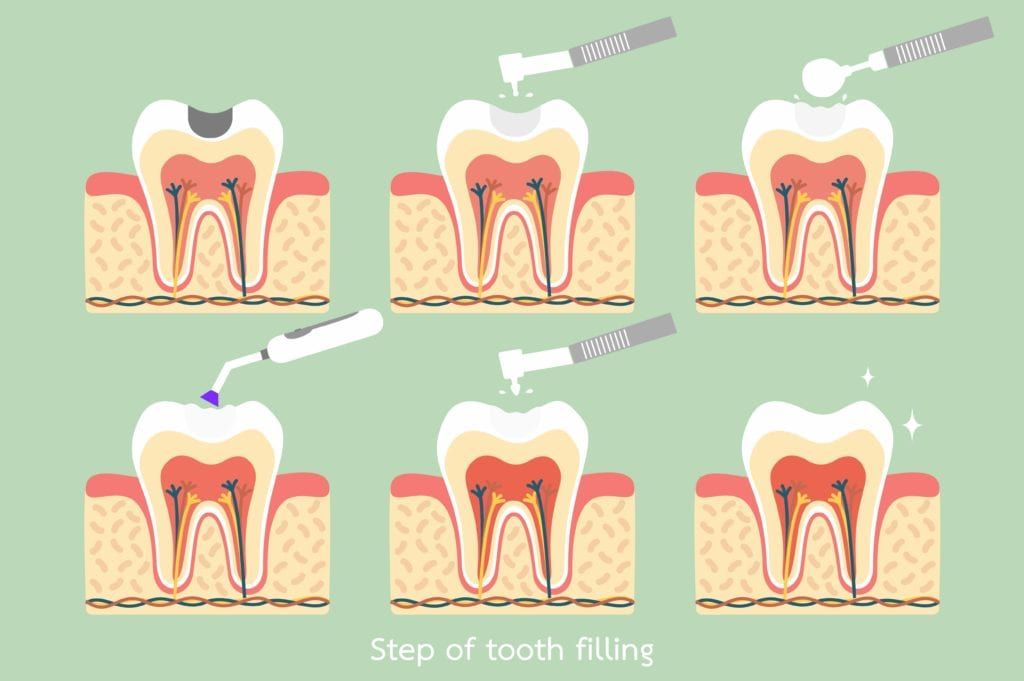Composite fillings are aesthetic dental fillings made from dental composite resin and customized to match the natural color of your teeth. They are also sometimes known as white fillings, tooth-colored fillings, or clear fillings. When restoring a decayed tooth, cosmetic dentists use composite fillings because they are not noticeable once in place. As with other types of dental fillings, composite fillings can be used to restore teeth with small to medium cavities.
Did You Know?
Dental composite resin is a mixture of plastic and glass. This gives it both a natural, translucent appearance and high durability.
Frequently Asked Questions:
Do I need a composite filling?
You may need a composite filling if you have a small to medium area of tooth decay and are looking for an aesthetic or metal-free dental filling option. Depending on the extent of the decay, you may or may not experience tooth pain or sensitivity. However, Dr. Martin can diagnose the presence of tooth decay either during a dental exam or through the use of dental x-rays. In cases where decay is present, Dr. Martin will likely recommend a composite filling, unless another restoration method is more appropriate.
How are composite fillings placed?
Before your filling procedure begins, your cosmetic dentist will be sure to anesthetize the affected area. In some cases, dental sedation may also be offered to keep you relaxed. Dental sedation is especially effective for those who have dental anxiety, an active gag reflex, or who don’t like sitting still.

Once you are comfortable and ready, Dr. Martin will use specialized dental tools to remove any decayed tissue from the tooth. Since your mouth is numb, the only thing you will feel is pressure. Once the decayed tissue is removed, the cavity will be cleaned to prevent future decay. In some cases, the cavity may need to be reshaped so the composite resin can adhere easier. However, composite fillings generally require minimal tooth modification and preserve most of the natural tooth structure.
After shaping the cavity, an acidic solution will be applied to the surface of the tooth in order to roughen up the surface. This also makes it easier for the composite resin to bond with the tooth. When composite resin is applied, it is a gel-like consistency that will need to be hardened with a curing light one layer at a time. The top layer will then be shaped and polished to blend in with the surrounding tooth structure. After your composite filling is placed, you will be able to return to your usual routine and diet as soon as the numbness wears off.
How do I care for my composite filling?
Caring for your composite filling is just like caring for your natural teeth. You will have no special instructions to follow, however you will need to maintain your daily dental routine of twice daily brushing and daily flossing. To prevent damage to your teeth or your filling, it is also recommended to avoid chewing on ice or hard candy, biting your nails, using your teeth to open things, and grinding or clenching your teeth. If you are a known teeth grinder or clincher, you may need to consider getting a dental night guard. When composite fillings are well-taken care of, they can last about 5-7 years.
